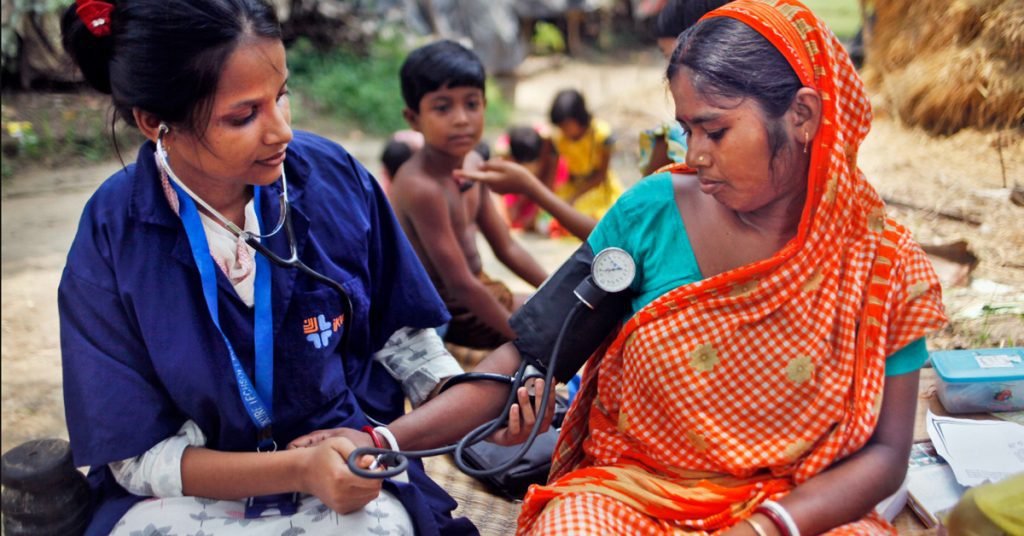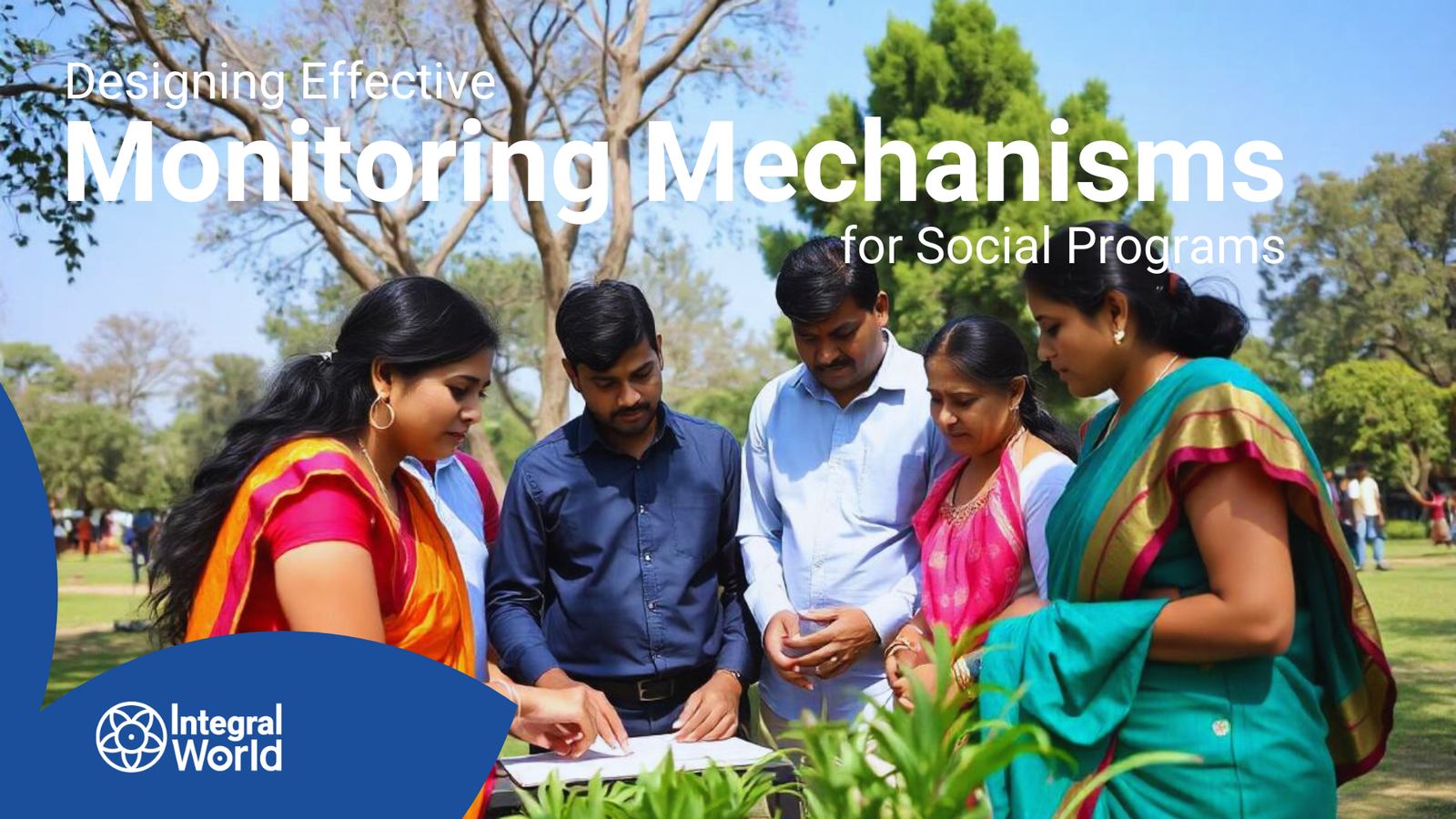The main aim is to effect meaningful change and nurture sustainable development, monitoring mechanisms are key. Effective monitoring not only promotes accountability and transparency but also enables the assessment of impacts, refinement of strategies and attainment of intended outcomes.
For Integral World, a non-profit organization dedicated to fostering community engagement for sustainable development, designing robust monitoring mechanisms is crucial. This article provides practical steps for NGOs and organizations to create effective monitoring systems, using real-world examples and expert insights
Introduction: The Pulse of Progress
Imagine a world where each social initiative could be precisely quantified; every action taken could be gauged based on its perceived effect; and every community undertaking could be finely tuned to perfection. It isn’t a utopian dream but rather an actuality made possible by efficient monitoring mechanisms.
To us at Integral World, we regard monitoring to be the lifeblood of any social program. It seems to me that we remain in the know about progress so that our intentions aren’t merely good-heartedness but they are truly impactful. In this article, we will look into ways of designing flexible and adaptable yet effective monitoring frameworks in line with the vision for sustainable development at all levels.
The Importance of Monitoring in Social Programs
Monitoring refers to a systematic process for collecting information about programs and outcomes including data analysis strategy used by the program management team responsible for tracking programs’ progress. It helps organizations to:
Ensure Accountability: Monitoring ensures the efficient use and transparent utilization of resources that builds trust among donors/stakeholders/beneficiaries;
Assess Impact: Organizations measure how effective their interventions are what works – in order to improve.
Inform Decision-Making: As strategic decisions are made within organizations or even when creating better results from them, such should be based on the data collected through monitoring.
Enhance Learning: The culture of learning and innovation is created by continuous monitoring which enables organizations to adapt to changing needs and hence evolve.

Practical Strategies for Designing Monitoring Mechanisms
Developing effective monitoring mechanisms requires carefully planned steps tailored to the specific needs and goals of each program. Here are some practical strategies to consider:
1. Define Clear Objectives and Indicators
Objectives: Precisely state what you want to achieve with your social program. Your internal objectives must be S.M.A.R.T i.e. Specific, Measurable, Achievable, Realistic and Time bound.
Indicators: Develop key performance indicators (KPIs) that can help in measuring progress towards each objective. These indicators should encompass both qualitative and quantitative factors such as inputs, outputs, outcomes and impacts.
Expert Insight: “Clear objectives and indicators form the foundation of any good monitoring system,” says Dr. Mark Abrahams a social development expert
2. Develop a Comprehensive Monitoring Plan
Monitoring Plan: This is the detailed plan for how monitoring will be done including methods for data collection, frequency of collecting it; who will be responsible for it; reporting format among other things;
Data Collection Methods: It may involve using variety of methods like surveys, interviews and focus groups, observations or even secondary analysis; ensure that it is all inclusive by considering different perspectives/stakeholders especially when gathering information about vulnerable groups;
3. Leverage Technology for Data Management
Technology: Employ digital tools/ platforms for managing data i.e., collection, analysis besides interpretation; mobile applications such as cloud based databases and software’s facilitating visualization enhances accuracy and efficiency.
The case of “Education for All” NGO that employs a mobile app to monitor student attendance and academic performance in real time, ensures immediate interventions at times of need.
Insight from an Expert: According to Sheryl Sandberg, the Chief Operating Officer of Facebook, “Data driven decision making is important for success. Using technology in monitoring enables organizations to effectively process and analyze data.”
4. Promote Community Participation
Community Involvement: Inclusive Monitoring requires engagement of program beneficiaries as well as community members. Their opinions and responses are necessary for getting to know the true impact of the program.
Participatory Monitoring: Participatory monitoring methods could be practised where data collection and analysis is actively done by community members themselves.
5. Provide Regular Feedback Loops
Reporting: Consistently submitting reports on findings is important while monitoring results should be available for stakeholders all the time. Reports should clearly present key findings and recommendations by utilizing brief statements with visual appeal.
Feedback Loops: Feedback loops may also be created for acting on the findings so as to continually improve the program. Stakeholders would discuss them during meetings while contributing towards decision making processes.

Real-Life Examples Of Effective Monitoring Mechanisms
Example 1: Sustainable Livelihoods Program
The sustainable livelihoods program seeks to enhance economic opportunities among marginalized populations. The following are elements of its Monitoring mechanism:
Baseline Assessments: Initial assessments were completed so as to determine existing economic conditions including skills levels within that community.
Progress Tracking: Income levels together with employment rates are monitored through quarterly surveys along with financial records maintained by farmers.
Community Feedback: Periodical focus group discussions conducted with people participating in the program in order to reveal their challenges and give them feedback.
Technology Integration: Data recording and analysis on a cloud-based platform accessible to all stakeholders.
This approach of comprehensive monitoring has contributed to increased household income and scaling up of such programs to cover other regions.
Example 2: Clean Energy for All Initiative
The International NGOs “Clean Energy for All” initiative focuses on providing renewable energy solutions to off-grid communities. The following are components of their monitoring system:
Energy Surveys: Information gathered through periodic household surveys facilitated information on satisfaction levels as well as how energy was being used at home.
Device Monitoring: IoT devices have been employed for remote monitoring of solar panel performance along with maintenance needs.
Mobile Reporting: Field staff use a mobile platform for real-time data collection and reporting.
Community Energy Committees: By setting up committees within the communities, local residents can be involved in controlling its usage and offering advice.
By this way, it has been possible to enhance access to clean energy while reducing overreliance on fossil fuels thereby demonstrating the significance of strong monitoring mechanisms.
Insights from Experts about Monitoring Mechanisms
Dr. Michael Quinn Patton, an evaluator, stresses the necessity of flexibility in monitoring systems. Implement adaptive monitoring frameworks to prevent stagnation when circumstances change.”
Thus they should be contemporaneous.”
Dr. Katherine Hay, who works in the social development research field underscores the factor of inclusiveness. “Inclusive monitoring systems which involve community members generate richer data hence deeper understanding regarding program impacts.”
Dr Robert Chambers (known for his work on participatory development) endorses participatory monitoring stating that “If you employ beneficiaries as monitors then they too will benefit from it thus ensuring that it truly addresses their demands”.
Actionable Tips for NGOs and Organizations
Define Clear Objectives and Indicators: Materialize your plans by having clear objectives as well as measurable indicators.
Make a Monitoring Plan: Provide an outline that details the process of monitoring, how data are collected and reported.
Harness Technology: This will help in improving data collection, management and analysis through digital tools and platforms.
Involve the Community in the Process: The involvement of beneficiaries and community members in the monitoring process is insightful as well as increasing ownership.
Regular Reporting Loops And Feedback Mechanisms Are A Must: Some of the ways to ensure this include by developing regular reporting mechanisms, feedback loops among others to enable program improvement.
Conclusion: The Path to Sustainable Development
Designing effective monitoring mechanisms is a journey of careful planning, continuous learning and community engagement. At Integral World, we believe monitoring requires more than data; it fosters accountability, transparency, and continuous improvement. NGOs and organizations need strong monitoring systems to ensure their social programs are impactful, adaptive, and support sustainable development.
Join us on this journey of fostering sustainable development through community engagement. Contact Integral World today for more information about our innovative approaches in regard to monitoring and evaluation. Together, let us make our world brighter.

